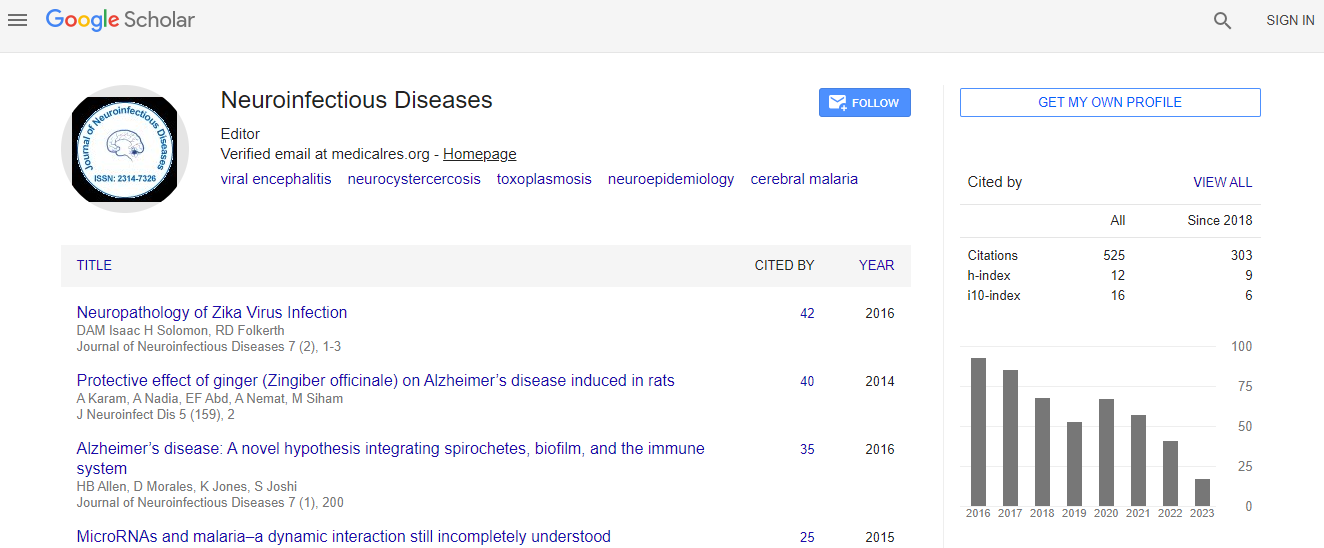Research Article
Long-Term Prognosis in Tick-Borne Encephalitis - A 10-Year Follow-Up Study in Patients with a Myelitic Course of Disease
Reinhard Kaiser*
Neurologische Klinik, Klinikum Pforzheim GmbH, Kanzlerstraße 2-6, 75175 Pforzheim, Germany
- *Corresponding Author:
- Reinhard Kaiser
Neurologische Klinik, Klinikum Pforzheim GmbH
Kanzlerstraße 2-6, 75175 Pforzheim, Germany
Tel: +49 7231- 9692602
E-mail: Reinhard.kaiser@klinikum-pforzheim.de
Received date: November 21, 2013; Accepted date: January 29, 2014; Published date: February 05, 2014
Citation: Kaiser R (2014) Long-Term Prognosis in Tick-Borne Encephalitis – A 10- Year Follow-Up Study in Patients with a Myelitic Course of Disease. J Neuroinfect Dis 5: 140. doi: 10.4172/2314-7326.1000140
Copyright: © 2014 Kaiser R. This is an open-access article distributed under the terms of the Creative Commons Attribution License, which permits unrestricted use, distribution, and reproduction in any medium, provided the original author and source are credited.
Abstract
Background: While several studies have been published on the prognosis of the meningitic and encephalitic courses of TBE, only few data exist on the long-term prognosis of the myelitic form of TBE. Therefore, the objective of the prospective study on hand was to follow up on such patients over a period of 10 years.
Method: In Baden-Wuerttemberg, 731 patients fell ill with TBE between 1994 and 1999. Of those patients, 81 (11%) suffered from encephalomyelitis. All patients were asked to participate in this study, and 57 gave their consent. Individual impairment was measured by allocating separate scores for the paresis of the extremities or cranial nerves, ataxia, impaired consciousness, respiratory paralysis, and defective hearing. Total impairment was measured at follow-up investigations after 1, 3, 5, and 10 years.
Results: A total of 11 patients (19%) recovered, 29 (51%) suffered from persisting paresis or other impairments, and 17 (30%) died between 1 and 10 years after the acute disease. The most important improvements occurred during the first year after the acute disease; after that, amelioration became less intense and increasingly rare. The clinical findings after 5 and 10 years, respectively, correlated well with the status of the acute disease (r=0.8, p<0.01), allowing to hazard a prognosis at the first presentation. The best level of regeneration was seen for ataxia, impairment of consciousness, double vision, urinary retention and mild paresis of only one extremity (4/5). Prognosis was worst in patients with tetraparesis and simultaneous occurrence of respiratory paralysis and/or dysphagia, dysarthria or paresis of the neck muscles.
Conclusion: The myelitic course of TBE is associated with a chance of recovery in only about 20% of patients. Clinical deficits do not correlate with findings in magnetic resonance tomography although they do with observations in postmortem studies.

 Spanish
Spanish  Chinese
Chinese  Russian
Russian  German
German  French
French  Japanese
Japanese  Portuguese
Portuguese  Hindi
Hindi 
